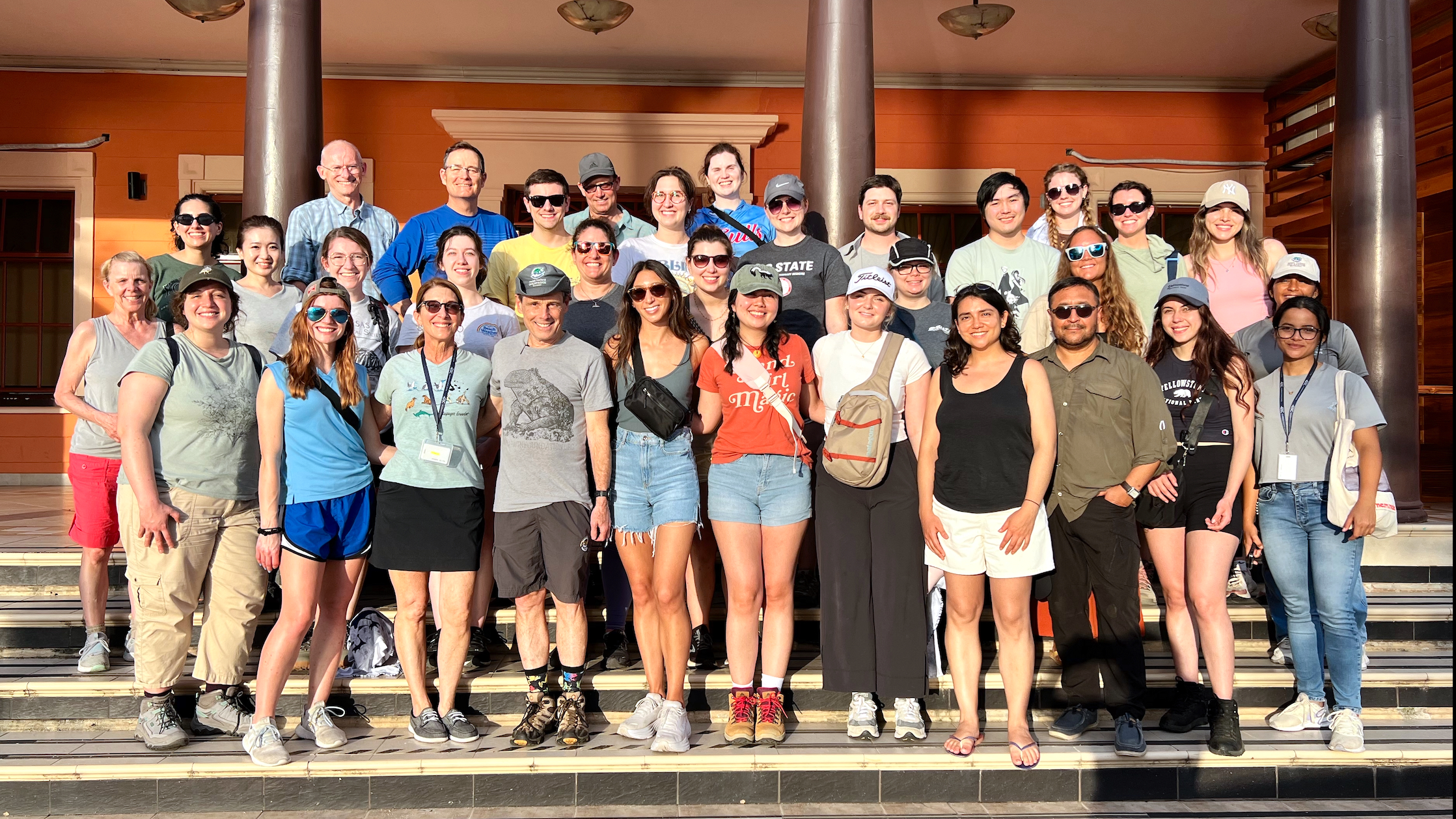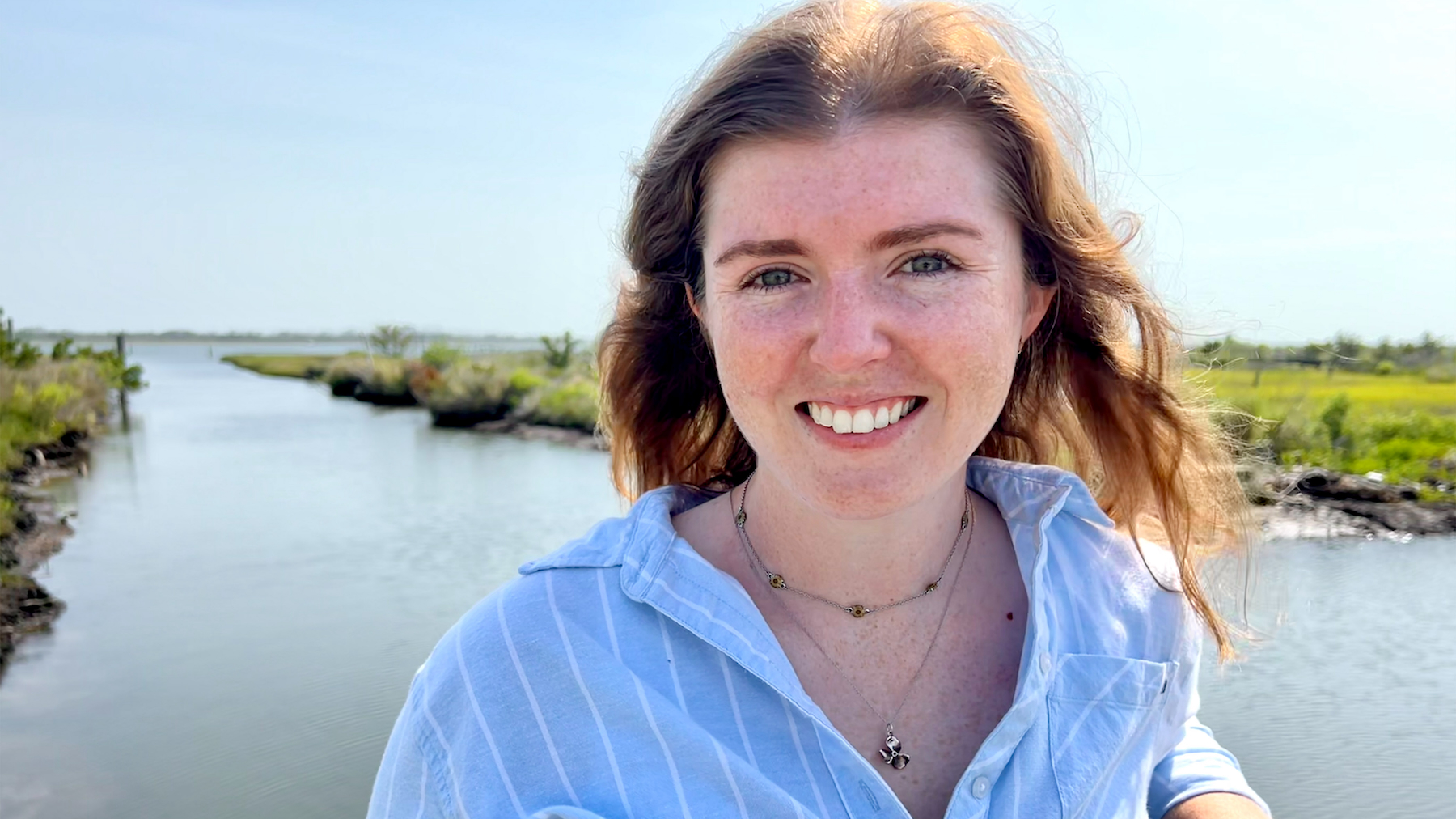NC State Veterinary Students Make a Difference in the Galapagos Islands

Morehead City, NC – Twenty-two Veterinary students just returned from a trip of a lifetime in the Galapagos Islands through NC State University’s Galapagos Elective: Conservation and Ecology in Ecuador course. The purpose of the Galapagos elective, or ILAVET, taught and led by Dr. Gregory Lewbart, professor of aquatic animal medicine at the Center for Marine Sciences and Technology (CMAST), Department of Clinical Sciences, is to provide veterinary students hands-on opportunities to work with wildlife across the Galapagos islands, while also learning about the history and culture of the area.
Lewbart says, “We just completed the tenth course, and it was a huge success! We had a team of 33 that included 22 veterinary students, seventeen from NC State, two from Kansas State, two from the University of San Francisco, Quito (USFQ), and one from Ohio State, in addition to 10 veterinarians, plus staff from the Galapagos Science Center (GSC) and the Province of the Galapagos Islands. Throughout the course, “Students study conservation and ecology in Ecuador, a country with different resources, health challenges, and economic drivers,” says Lewbart.
The idea for the course was born when Lewbart first became aware of the GSC in in 2013. Interested in their work, especially because veterinary services in the Galapagos are limited, he started researching how to coordinate work in a developing country with a different language and culture. Lewbart indicates that, “Their veterinarians have very limited training and access to medical resources,” and because of these conditions, he knew that he and his students could make a difference.

In 2016, after much pre-planning, Lewbart started the ISLAVET program in the form of the Galapagos Elective course at NC State, taking a group of students to participate in hands-on research in conjunction with the science center. To date, more than 140 students have participated.
The magnitude of planning each annual trip is an enormous responsibility. Lewbart selects the participants, including scientists with a variety of expertise, coordinates equipment, medical supplies, research permits (in various languages), paperwork for international travel, coordinates with the GSC, plans lodging and meals, and the list continues.
Once the group arrives in the Galapagos, the GSC serves as their base, where students attend lectures, conduct lab work, and participate in research-based learning expeditions. According to the GSC, “Lewbart has conducted research at the Galapagos Science Center since its inception with numerous trips to the Galapagos over the years. Many of these [have been] part of an international team of researchers that helped to establish baseline health parameters for various wild species in the archipelago.”
This year’s group included students and researchers from the USA, Australia, the UK, and Singapore. Three Israeli scientists also helped the team while in the field on a marine iguana project. He said that one of the most interesting projects on this trip involved blood cross-matching marine and land iguanas, which resulted in one of the valuable takeaways from the trip. “It looks like one can safely perform a blood transfusion from a marine iguana to a marine iguana, a land iguana to a land iguana, and a marine iguana to a land iguana,” says Lewbart.
Other research projects this year included: marine iguana metabolism, lava gull health, Santa Fe lava lizard health, scalloped hammerhead shark health, cetacean health and monitoring, and bacalao grouper health. As part of their coursework, students write up their research experience and findings.
One student participant, Cathy Delano, described the experience as truly unforgettable. Delano says, “The opportunity to study wildlife in such a unique and biodiverse environment was truly priceless. I felt incredibly motivated and excited to engage in real-world fieldwork—especially in a place as iconic as the Galapagos—which was both inspiring and eye-opening.
Working with the staff and faculty at the Galapagos Science Center was an incredible experience. Their dedication to research, conservation, and education created such a motivating environment. I also loved the unique opportunity to work alongside other professionals from different countries and cultures, all coming together toward a mutual goal with a shared love for native wildlife.”
Delano says, “I would absolutely recommend this trip to other students. It offers a rare combination of hands-on learning, cultural immersion, and adventure that’s hard to find elsewhere. I came back feeling more confident in my career goals and more connected to the global scientific community.”


